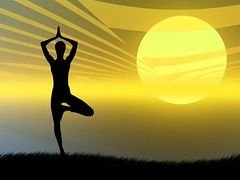
Spark 12
INTERNATIONAL YOGA DAY
“The wise regard that as yoga, when senses are kept in perfect control,” says the Kathopanishad1. The Vedanta (the wisdom of the Upanishads) looks at yoga as aiming at firm abidance in the Self (Atma), where there is no need for the senses (implying organs of perception, of action and even the inner instruments) to seek gratification in the outer world.
Bookish knowledge and true wisdom are different in terms of self-control. The Vedanta wisdom on one hand and mastery in yoga on the other both emphasize on freedom from inner mismanagement. In one of his compositions, Dhanyastakam, Adi Shankara says2 true wisdom brings about calming of sense organs.
While the well-known meaning of the word yoga is ‘union,’ derived from the verbal root ‘yuj’ that means ‘to join,’ Bhagavad-Gita supplies a deeper insight, where Sri Krishna remarks3, “That is to be known as yoga, where there is viyoga (separation) from the (false, unwarranted) association with sorrow.” In ignorance (ajnana), we slip from our true nature as the Self, and come to experience the false limitations of the individuality. The result is sorrow. Thus our embrace of sorrow is rooted in lack of Self-knowledge. When we extricate (viyoga) ourselves from this harmful embrace, union (yoga) with the bliss of the Self happens.
Speaking of 101 paths4 within our body through which energies flow, the Kathopanishad again provides the seeds for the science of yoga. Vital energy – prana – is controlled through various exercises, as guided by the Yoga-Shaastra. Spiritual growth is marked by increased self-awareness and excellent self-management. Not just managing our impulses and emotions, but having control over prana, which is subtle energy inside us, is part of this evolution. Breath is the external manifestation of prana, which is much more than breathing in its entirety.
“I do not believe in bending of the body,” remarked Swami Chinmayanandaji, “I would like to straighten my mind!” Some masters like him adopted jnana-marga (path of knowledge), almost to the exclusion of yogic practices. Both the teachers who taught Swamiji – Swami Sivananda and Swami Tapovanam – endorsed yoga though.
Though there are differences in areas of emphasis, the two sciences of yoga and Vedanta can be complementary to each other. The higher we go in either of them, the vision and the practice have lesser differences.
Swami Chidananda
June 21, 2015
Notes:
1 taam yogamiti manyante sthiraam-indriya-dhaaranaam (Katha Upanishad 2.3.11)
2 taj-jnanam prashamakaram yad-indriyanam (Dhanyastakam verse 1)
3 tam vidyad duhkha-samyoga-viyogam yoga-samjnitam (Gita, chapter 6)
4 shatam chaika hridayasya naadyah (Katha Upanishad 2.3.16)
